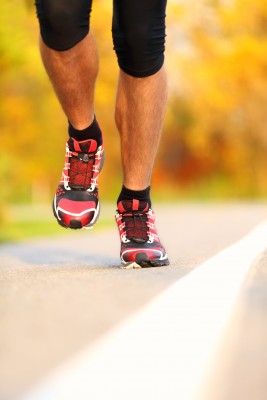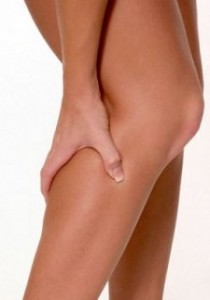 I had always said I would never do a Triathlon only because you have to run. I have always hated running; it has never been easy, I found it boring but most of all it causes a lot of injuries. Back when I was at school I developed “shin splints” in both legs which became so bad that I literally could barely walk! Shin splints is when someone does too much exercise too soon and the calf muscles become tight and shortened. This causes the muscle to pull on the bone that it is attached to causing micro fragments of bone to be pulled away thus causing incredible amounts of pain.
I had always said I would never do a Triathlon only because you have to run. I have always hated running; it has never been easy, I found it boring but most of all it causes a lot of injuries. Back when I was at school I developed “shin splints” in both legs which became so bad that I literally could barely walk! Shin splints is when someone does too much exercise too soon and the calf muscles become tight and shortened. This causes the muscle to pull on the bone that it is attached to causing micro fragments of bone to be pulled away thus causing incredible amounts of pain.
So fast forward to 2012 and I eventually agreed to do a triathlon, a small one at that just to give it a Tri (sorry!). I actually entered 2- The Lidl Half Banana Super Sprint, followed the weekend after by the London Triathlon (Olympic distance). By this point I haven’t had shin splints for several years which is great! The possibility of a recurrence was always on my mind however so I made sure I added preventative measures into my training. This included plenty of calf stretching and foam rolling but also deliberately not pushing the running distance too far. I’ll tell you how I got on later.
Running is one of the most popular forms of exercise, and for many different reasons; to lose weight, to increase fitness, to de-stress or to prepare for a specific event such as a marathon or triathlon. But it is also FREE! No gym membership required (unless you are one of those people who do actually pay a gym membership just to run on a treadmill?!). So naturally you will see all sorts of people running- male and female, old and young, unfit to super fit, overweight to overskinny- and therefore you will also expect to see a huge variation in running technique, and this is where the problems begin.
Firstly let’s talk about technique. I never before realized there was a technique to running! You just put one foot in front of the other and repeat quite fast?! Well no. Obviously technique will differ depending on the speed you are doing; a sprint is different to a jog. So lets just talk about distance running, not sprinting, as this is what most people will be doing for their exercise.
There are many factors for running technique but the main ones are;
- Posture
- Stride Length
- Stride Rate
- Foot Strike (where on your foot you hit the ground)
Foot strike is the one where most people are failing so badly. If you look at runners you will often see that they strike the ground with their heels first and roll along the foot until they push off from their toes. The problem with this is that as you strike the ground with your heel you send shock waves through your heel bone, into your ankle, up your leg into your knee and further up into your hip, pelvis and lower back. Add to this the 1000’s of repetitions you take per running session and you are soon going to develop knee pain or back pain. In addition to this, if you are overweight think about the additional forces going into your knees! This is a surefire way to damaged knee cartilage!
The way around this is to run using a mid-foot or fore-foot strike, avoiding contact between your heel and the ground. This is much better for your body because the foot and ankle act more like a spring, dissipating the load into the next step. The trouble is that many people have expensive running trainers which tend to have a thick heel. This makes it harder to mid-foot strike and more likely to heel strike. Therefore “the better” (and likely the more expensive) the running shoe the more likely it is to negatively affect your running and thus predispose you to more injuries due to increased forces going through the legs!
As I mentioned earlier, I never used to enjoy running, this was partly due to the hard impact forces that each step caused because of my heel striking. While training for my triathlons I was consciously making sure I was mid-foot striking when running. This had 2 noticeable effects; 1) My injuries from running was virtually none, and 2) My efficiency and speed increased while actually feeling easier!
 But an injury did occur after the London Triathlon. I ended up with a painful joint on the outside of my foot. Just as a reminder, the distances were; 1500m Swim, 40km Cycle and 10km Run. This was a case of fatigue causing (or predisposing to) injury. Here’s what I think happened. By the time I transitioned onto the run segment of the triathlon, my thigh muscles were quite fatigued. This caused my left quadricep to cramp up on several occasions during the run which therefore caused me to increase the amount of weight going into the right leg and foot. Therefore the right foot took too much pressure and repetition that the joint became inflamed afterwards. This is a perfect example of cause and effect.
But an injury did occur after the London Triathlon. I ended up with a painful joint on the outside of my foot. Just as a reminder, the distances were; 1500m Swim, 40km Cycle and 10km Run. This was a case of fatigue causing (or predisposing to) injury. Here’s what I think happened. By the time I transitioned onto the run segment of the triathlon, my thigh muscles were quite fatigued. This caused my left quadricep to cramp up on several occasions during the run which therefore caused me to increase the amount of weight going into the right leg and foot. Therefore the right foot took too much pressure and repetition that the joint became inflamed afterwards. This is a perfect example of cause and effect.
The last reason why running is not a good form of exercise is when it comes to weight loss. Firstly, overweight people shouldn’t run if they want to save their knees from crumbling due to the repetitive pounding on each knee. Secondly, running is an activity that the body can adapt to easily, thus allowing someone to increase their muscular endurance and become good at preserving energy. This is due to the body thinking it is under stress and may be running from a predator or other life threatening event. Along with this stress comes an increase in stress hormone Cortisol which also causes the body to hold on to its fat stores because it may need it for a long term survival situation. This is why you may often see overweight people continuously running without losing much body fat.
So to conclude, if you would like to start running;
- Start of slowly, build up the distance over plenty of weeks and months. Don’t go straight into running 10 miles!
- Stretch and Foam Roll your legs and thighs frequently to prevent the muscles tightening and becoming susceptible to injuries such as Knee, Back or Shin pains.
- Start working on your running technique, changing it from a heel strike to a mid-foot strike.
- Slowly build up to wearing shoes with thinner heels such as those designed for mid-foot/barefoot running.
- Get regular sports massages to prevent over tightening of your body.
If you are really serious about running I would also suggest working with a running coach; one who assesses your technique through video analysis and shows you what you are doing. I recommend a company called Kinetic Revolution, based down in Battersea.
If you think you need further assistance with anything mentioned above or you would like to get treated for any running related injuries then contact us now!
